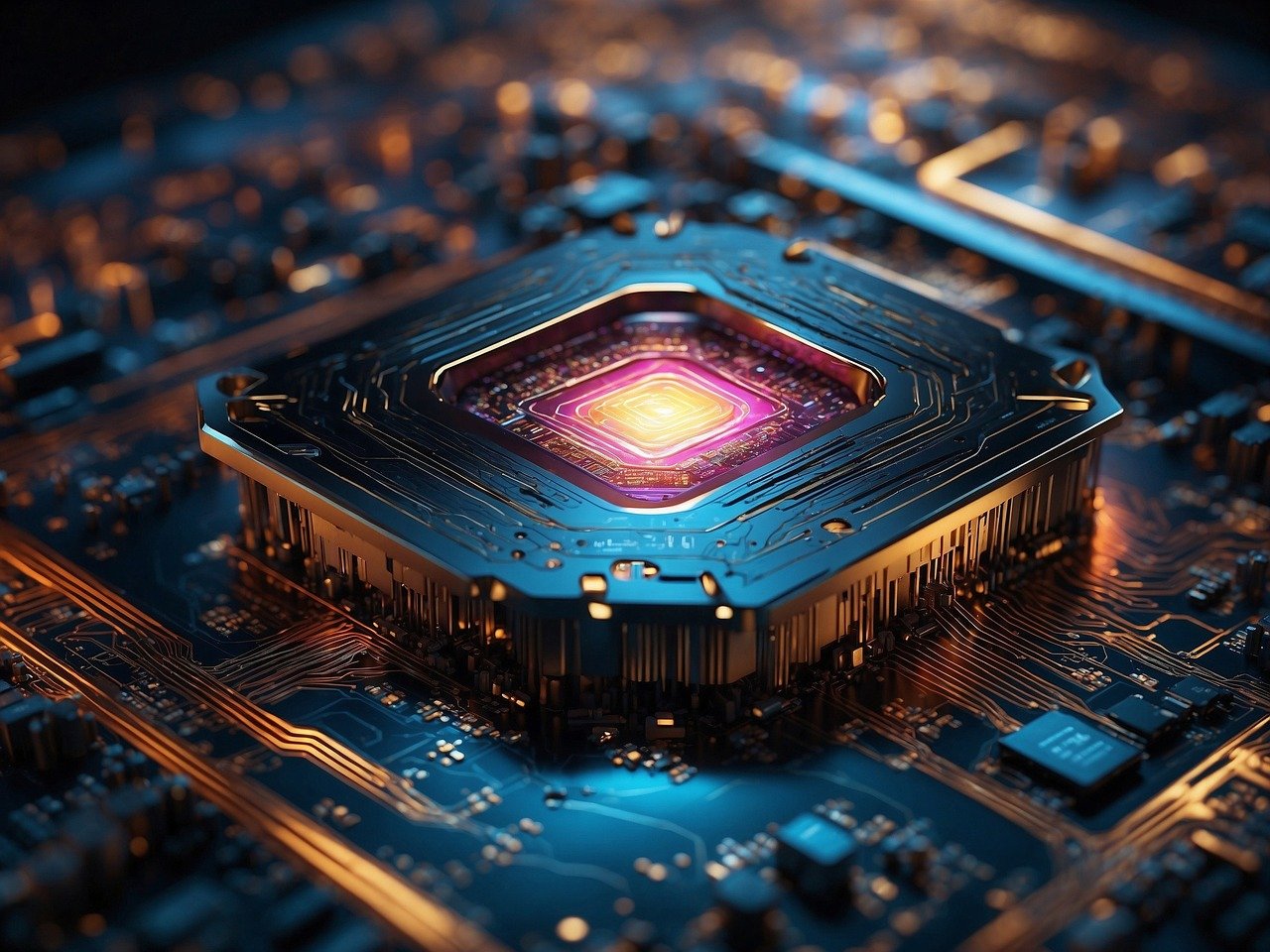
Artificial Intelligence (AI) has been around for decades, but a new type of AI called Generative AI is making waves in the tech world. While traditional AI is designed to analyze and understand data, Generative AI can create new data from scratch. In this post, we’ll explore the key differences between these two types of AI and what makes Generative AI so special.
Generative AI is artificial intelligence that can create entirely new data, such as text, images, audio, and even video. Unlike traditional AI, which is designed to analyze and understand existing data, Generative AI uses advanced deep learning models and neural networks to generate original content.
This revolutionary technology could revolutionize various industries, from creative fields like art and literature to more practical applications in product design, drug discovery, and beyond. As Generative AI continues to evolve, it promises to unlock new realms of creativity, efficiency, and innovation, opening doors to possibilities we have yet to imagine.
What is Traditional AI?
Traditional AI, also known as narrow AI or machine learning, is a type of artificial intelligence designed to analyze and understand existing data. It works by identifying patterns and making decisions based on rules and algorithms.
One common approach in traditional AI is rule-based systems, where experts define a set of rules that the AI follows to make decisions. For example, a rule-based system might be used to approve or deny loan applications based on factors like income, credit score, and employment status.
Another popular approach is machine learning, where the AI learns from data and experiences to make predictions or decisions without being explicitly programmed. Machine learning algorithms can be trained on large datasets, such as images or speech recordings, to recognize patterns and make accurate predictions.
Some examples of traditional AI applications include:
- Image recognition: Identifying objects, people, or scenes in images or videos.
- Speech recognition: Converting spoken words into text.
- Predictive analytics: Using data to forecast future trends or behaviors.
- Recommendation systems: Suggesting products or content based on user preferences.
While traditional AI has made significant advancements and is widely used in various industries, it has limitations. One of the biggest limitations is that traditional AI cannot create new data from scratch. It relies on existing datasets and can only make predictions or decisions based on the data it has been trained on.
This means traditional AI is not well-suited for tasks that require creativity or generating entirely new content. It is limited by the data it has access to and cannot go beyond that to produce truly original outputs.
What is Generative AI?
Generative AI represents the next frontier in artificial intelligence, enabling machines to generate original content across various mediums. Unlike traditional AI models that rely on existing data, Generative AI can create new text, visuals, audio, and even video. This innovative technology opens up possibilities, allowing AI systems to tap into their “creative” potential and produce novel outputs that have never been seen or heard.
So, how does Generative AI work? It uses advanced deep learning models and neural networks, inspired by the human brain processes information. These models are trained on vast amounts of data, allowing them to learn patterns and relationships within that data.
Once trained, the Generative AI model can use that knowledge to generate new, original content. For example, a text generation model might be trained on millions of books and articles, allowing it to understand the patterns and structures of written language. It can then use that understanding to create new content, such as stories, articles, or computer code.
Some examples of Generative AI applications include:
- Text generation: Creating written content like stories, articles, scripts, or code.
- Image generation: Generating original images, artwork, product designs, or animations.
- Music generation: Composing new music or creating unique sounds and audio.
- Video generation: Producing synthetic videos, including deepfakes (AI-generated videos of people).
Key Differences Between Traditional AI and Generative AI
While traditional AI and generative AI are types of artificial intelligence, they have some key differences that set them apart. Here are three main ways in which generative AI differs from traditional AI:
- Ability to Create New Data – The biggest difference is that generative AI can create entirely new data from scratch, while traditional AI cannot. Traditional AI systems are designed to analyze and understand existing data, but cannot generate original content. Generative AI, on the other hand, uses advanced models to produce new text, images, audio, and even video that have never existed before.
- Underlying Approach – Traditional AI relies heavily on machine learning techniques, which involve training algorithms on existing data to identify patterns and make predictions or decisions. Generative AI, however, uses deep learning models and neural networks that are inspired by the human brain. These models allow generative AI to learn more flexibly and creatively, enabling it to generate original content.
- Data Requirements – Generative AI typically requires much larger amounts of data than traditional AI. While traditional machine learning models can sometimes work with smaller datasets, generative AI models need plenty of data to effectively learn patterns and relationships. This large data requirement is necessary for generative AI to produce high-quality, coherent outputs.
These key differences highlight the unique capabilities of generative AI and its potential to unlock new possibilities across various industries and applications.
Advantages of Traditional AI
While Generative AI has been gaining attention lately, Traditional AI still offers several advantages that make it a valuable and widely used technology. Here are some key benefits of Traditional AI:
- Proven Track Record – Traditional AI techniques, such as machine learning and rule-based systems, have been around for decades and have proven to be effective in various applications. They have a long track record of successful implementation across industries, from healthcare and finance to transportation and manufacturing.
- Accuracy and Reliability – When trained on high-quality data, Traditional AI models can achieve remarkable accuracy and reliability in tasks like image recognition, speech recognition, and predictive analytics. This reliability makes Traditional AI well-suited for critical applications where accuracy is paramount.
- Explainability – Unlike the complex neural networks used in Generative AI, many Traditional AI models are more transparent and easier to interpret. This explainability is important in healthcare and finance, where decision-making processes must be understood and audited.
- Efficient with Smaller Datasets – While Generative AI requires lots of training data, many Traditional AI models can perform well with smaller datasets. This makes Traditional AI more accessible and easier to implement in scenarios where large datasets are not available.
- Lower Computational Requirements – Compared to the computationally intensive models used in Generative AI, Traditional AI models often have lower computational requirements. This can make them more efficient and cost-effective, especially for applications running on devices with limited resources.
While Generative AI is pushing the boundaries of what’s possible, Traditional AI remains a reliable and efficient technology with proven applications across various domains.
Advantages of Generative AI
Generative AI is a game-changing technology that offers several exciting advantages over traditional AI approaches. Here are some key benefits of Generative AI:
- Creativity and Innovation – We’ve covered this many times but that’s because it is one of Gen AI’s biggest advantages. It can create new content from just a line of text.
- Personalization and Customization – Generative AI can create highly personalized and customized content tailored to individual preferences and needs. This could be particularly useful in advertising, entertainment, and education, where personalized experiences can lead to better engagement and learning outcomes.
- Efficient Content Generation – By automating the generation of certain types of content, such as reports, articles, or even computer code, Generative AI can significantly improve efficiency and productivity. This can lead to cost savings and faster turnaround times, especially for repetitive or time-consuming tasks.
- Data Augmentation – Generative AI can be used to create synthetic data, which can be invaluable for training other AI models, particularly in scenarios where real-world data is limited or difficult to obtain. This can help overcome data scarcity challenges and improve the performance of AI systems.
- Exploration of New Ideas – Generative AI can be used for exploring new ideas and concepts that humans may not have considered. By generating diverse and novel outputs, Generative AI can inspire human creativity and potentially lead to breakthroughs in various fields.
As Generative AI continues to evolve and become more advanced, its advantages are expected to become even more significant, potentially revolutionizing various industries and paving the way for new and innovative applications.
Conclusion
Generative AI is a game-changer, offering new possibilities for creating data from scratch. While traditional AI has strengths in analyzing and understanding existing data, Generative AI opens up a world of creativity and innovation. As this technology continues to evolve, it will be exciting to see how it transforms various industries and shapes the future of AI.


